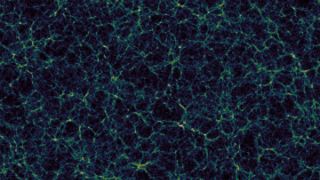 Dear readers, Catholic Online was de-platformed by Shopify for our pro-life beliefs. They shut down our Catholic Online, Catholic Online School, Prayer Candles, and Catholic Online Learning Resources essential faith tools serving over 1.4 million students and millions of families worldwide. Our founders, now in their 70's, just gave their entire life savings to protect this mission. But fewer than 2% of readers donate. If everyone gave just $5, the cost of a coffee, we could rebuild stronger and keep Catholic education free for all. Stand with us in faith. Thank you. Help Now >
Dear readers, Catholic Online was de-platformed by Shopify for our pro-life beliefs. They shut down our Catholic Online, Catholic Online School, Prayer Candles, and Catholic Online Learning Resources essential faith tools serving over 1.4 million students and millions of families worldwide. Our founders, now in their 70's, just gave their entire life savings to protect this mission. But fewer than 2% of readers donate. If everyone gave just $5, the cost of a coffee, we could rebuild stronger and keep Catholic education free for all. Stand with us in faith. Thank you. Help Now >
Scientists learn 68 percent of the universe simply doesn't exist
FREE Catholic Classes
Could most of the universe be an illusion? The lion's share of the energy supposedly in the universe may not even exist, says physicists.

The universe has a sponge-like structure with galaxy clusters forming strands, and vast gulfs of empty space in between.
Highlights
Catholic Online (https://www.catholic.org)
4/3/2017 (8 years ago)
Published in Technology
Keywords: cosmological constant, fudge factor, 68, percent, universe, dark energy
LOS ANGELES, CA (California Network) -- According to Einstein, there are only two things in the universe, matter, and energy. Both are interchangeable. This is summed up in his famous equation, E=MC2.
According to the Big Bang Theory of the universe, the universe was formed with matter and anti-matter. The matter and anti-matter canceled each other out, converting their mass into pure energy. But there was also four percent more normal matter than anti-matter. This normal matter is what makes all the things we can see in the universe, from planets to galaxies.
Where did all the energy go? Einstein originally believed the universe would collapse inward on itself, yet it was not doing so. So he invented the "cosmological constant," a sort of "fudge factor" to hold the universe at a constant size. The factor was equivalent to 68 percent of the energy of the universe, which nobody could account for.
Later, observations by astronomer Edwin Hubble proved the universe was expanding. Today, further observations have proved the universe is not only expanding, but it is accelerating. Scientists continue to use a modified fudge factor to explain this in their models. The culprit is dark energy. The problem is, nobody knows what the heck dark energy is, or if it exists.
Now a new hypothesis explains the expansion of the universe, and it doesn't need any fudge factor. And the reason why we haven't found "dark energy" is that it doesn't exist.
The study which supports the hypothesis comes from the Eotvos Lorand University in Hungary and the University of Hawaii. Researchers from the two universities created computer simulations of the universe without the fudge factor. They also took care to model the universe as it seems to appear, that is dense parts where galaxies abound, punctuated by vast bubbles where nothing exists. This model gives the universe a spongelike appearance, which fits observations.
The model matches what we observe. In the model, the universe is expanding, but not uniformly in all directions. The acceleration is faster in some places, slower in others. But it is still accelerating.
The implication of the finding is that 68 percent of the universe, which we have long assumed to exist, doesn't.
If the results are verified and do a better job of explaining what we observe, then we will update our textbooks with the new model. This is how science works and is a strength of the discipline. As understandings improve, we update and upgrade the model. It will also save a lot of time. Scientists can pursue other discoveries, instead of wasting time looking for 68 percent of the universe that apparently doesn't exist.
Subscribe Now - Catholic Online YouTube
---
'Help Give every Student and Teacher FREE resources for a world-class Moral Catholic Education'
Copyright 2021 - Distributed by Catholic Online
Join the Movement
When you sign up below, you don't just join an email list - you're joining an entire movement for Free world class Catholic education.
- Advent / Christmas
- 7 Morning Prayers
- Mysteries of the Rosary
- Litany of the Bl. Virgin Mary
- Popular Saints
- Popular Prayers
- Female Saints
- Saint Feast Days by Month
- Stations of the Cross
- St. Francis of Assisi
- St. Michael the Archangel
- The Apostles' Creed
- Unfailing Prayer to St. Anthony
- Pray the Rosary
![]()
Copyright 2025 Catholic Online. All materials contained on this site, whether written, audible or visual are the exclusive property of Catholic Online and are protected under U.S. and International copyright laws, © Copyright 2025 Catholic Online. Any unauthorized use, without prior written consent of Catholic Online is strictly forbidden and prohibited.
Catholic Online is a Project of Your Catholic Voice Foundation, a Not-for-Profit Corporation. Your Catholic Voice Foundation has been granted a recognition of tax exemption under Section 501(c)(3) of the Internal Revenue Code. Federal Tax Identification Number: 81-0596847. Your gift is tax-deductible as allowed by law.








